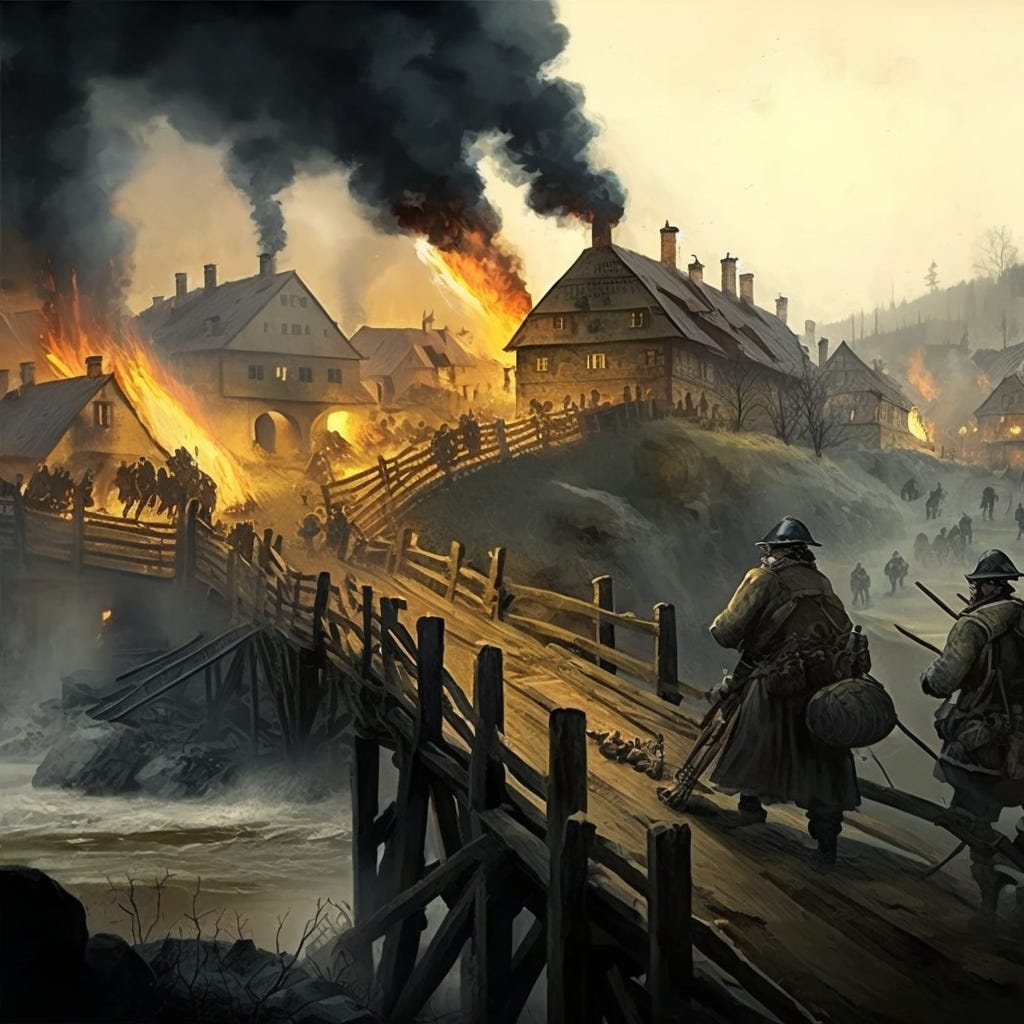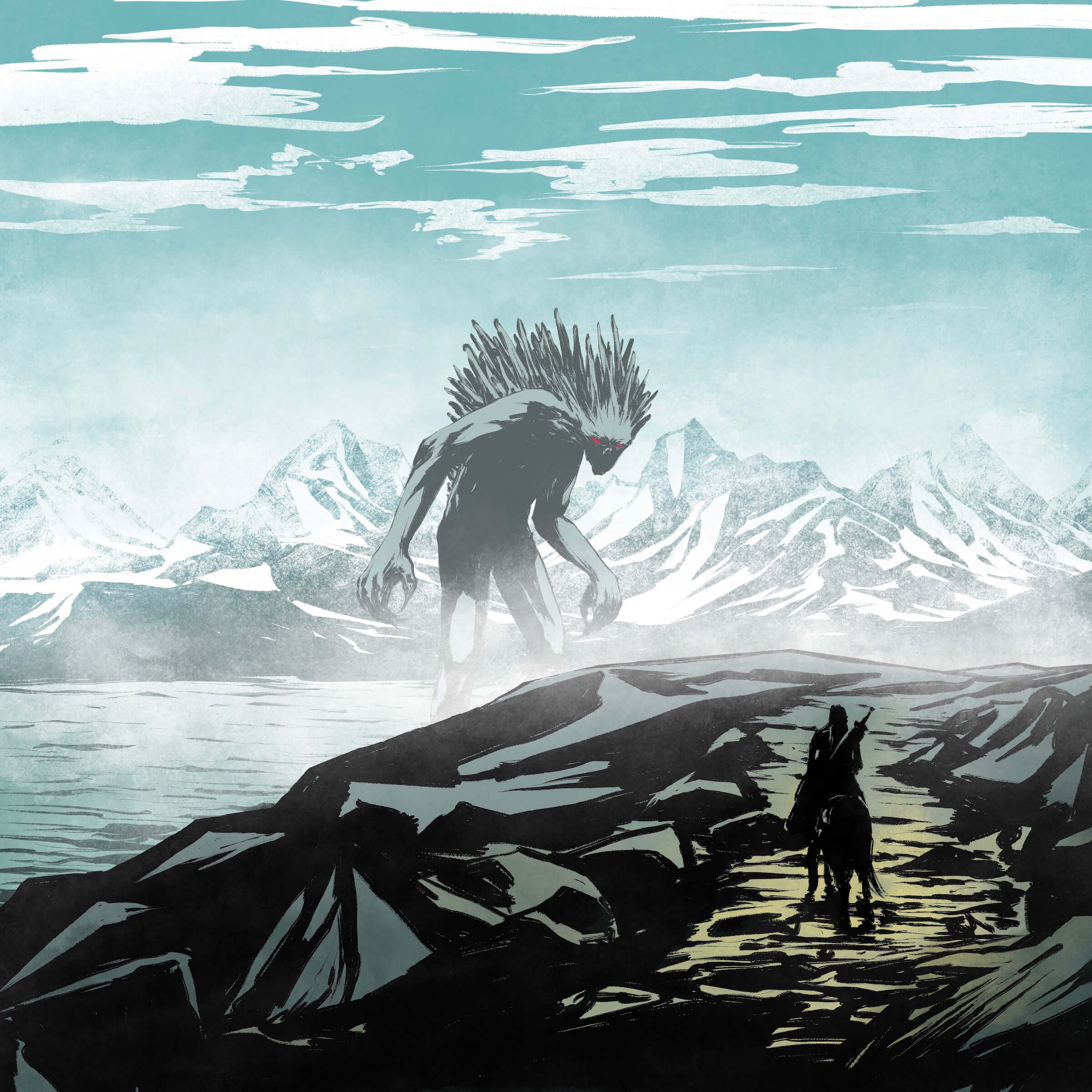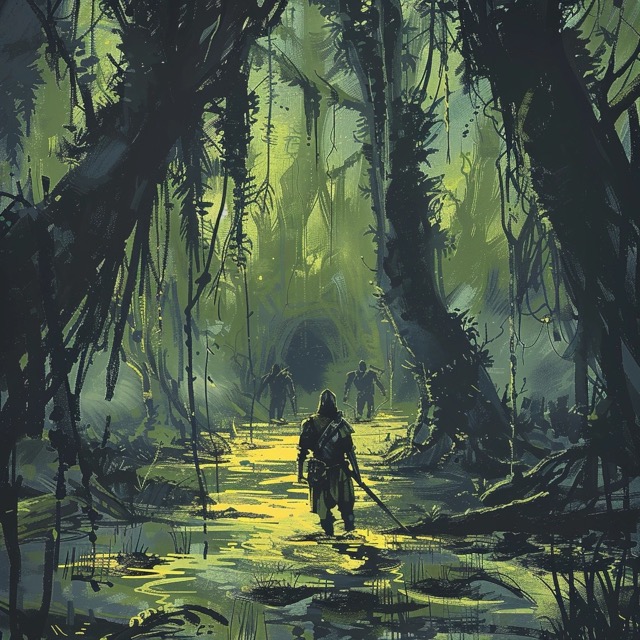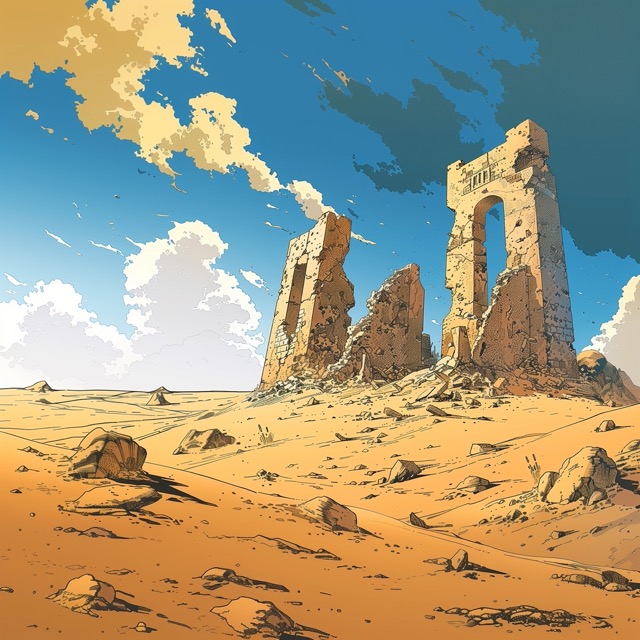Shadows of Rocks at Noon
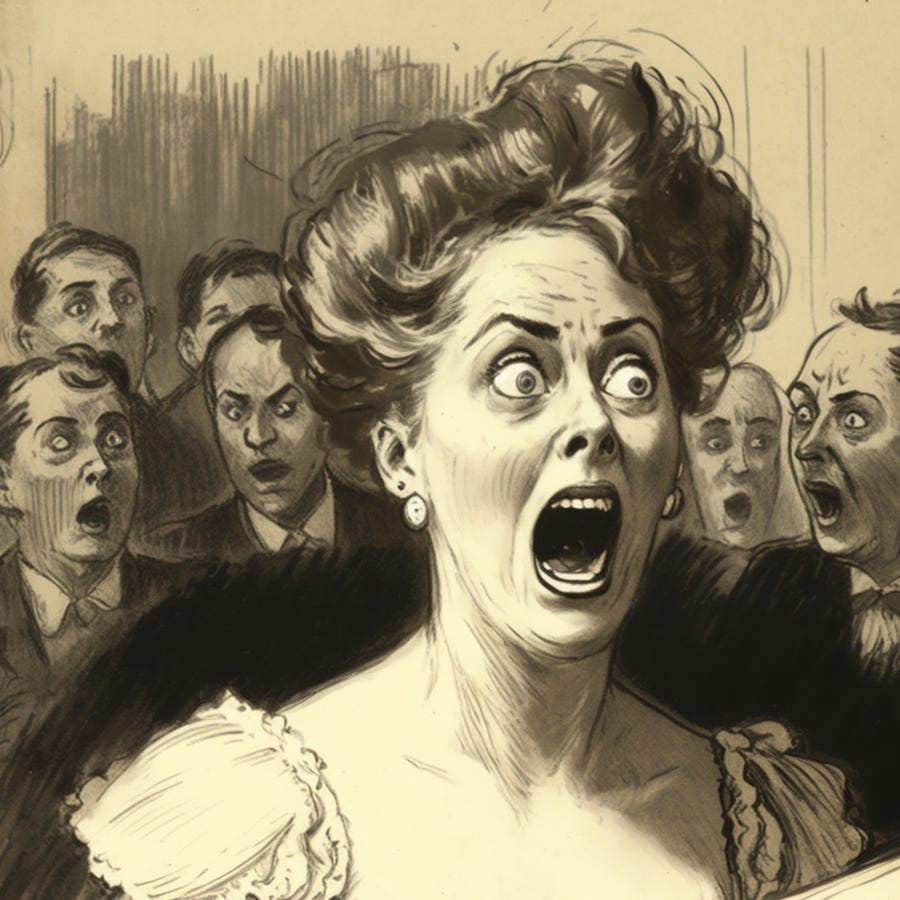
What are we to do with the mysteries of life? How do we maintain our humanity in a cruel and monstrous world? What is it to be consumed by our own work?
Few artists attempt to answer such questions as Clayton ‘ja Baumbad (712-752[?] AE). Raised during the reign of Rorei the Young, ‘ja Baumbad was a self-taught artist whose work blends the organic with the formal, the personal with the esoteric. Almost entirely unknown during his lifetime — only two of his five surviving pieces were ever shown publicly, then promptly banned — by 752 AE, ‘ja Baumbad had disappeared entirely and was presumed dead. His work was rediscovered in 803 AE. The Amalcross Museum of Modern Art is proud to present this first-ever retrospective collecting all ‘ja Baumbad’s surviving work.
This exhibit is made possible with the generous funding of our sponsor, Sangus Capital.
The Night Shall Out Thine Eyes (728-32 AE)
Mixed media: Oil, nails, razors on canvas
Though ‘ja Baumbad was a prolific artist throughout his childhood and early adulthood, this work is the first he did not destroy or incorporate into later pieces. To accomplish such a startling and unsettling effect, ‘ja Baumbad applied layers of black paint to the canvas for four years, stopping only to chisel out gashes, hammer nails through the back, or bury razors within the paint. When he was finished, the paint was four feet thick. The result — of a textured pitch-black sky — would have been even more resplendent when the work was first revealed at the Faison Gallery in 733 AE: ‘Ja Baumbad invited patrons to touch the painting so the nails would appear as bleeding stars over the course of the night. The Faison Gallery banned him from ever displaying another work.
Please do not touch the artwork.
Sing! the Holy Destroyer — What Hath Ye Brought? (733-9 AE)
Mixed media: Sketches on paper, with oil, sand, ash, yak’s blood on Uncanny canvas
After being banned by the Faison Gallery, ‘ja Baumbad entered a deep depression, despairing that he would never be exhibited again. He burned most of his old work and turned to the occult studies of the Meridian, a subject in which he’d been fascinated since early childhood. From what legible entries there are in his journal, ‘ja Baumbad states he was “searching to graft Art with Life — to make it as Hungry for us as we are for It.” ‘Ja Baumbad slayed an Uncanny Being to use its skin as canvas; then, as if to impart all his knowledge and experience up to this point in his life, ‘ja Baumbad plastered his surviving sketches and his esoteric research to the back of the canvas. He then organized the sand and ash into the massive glyph you see, and then slathered paint over it to bind it to the canvas — an oil of ‘ja Baumbad’s own devising to create the beautiful, almost blood-like red. The yak’s blood was a late addition; we can only guess as to the meaning of its inclusion from ‘ja Baumbad’s journal: “It must be so doused, lest It swallow me too.”
Death Grows Life So It May Feast (740-3 AE)
Mixed media: Oil, rocks, yak’s blood on canvas
‘Ja Baumbad moved away from the excesses of his previous work with this minimalist marvel. At the same time, ‘ja Baumbad was beginning to grapple with a burgeoning mental illness: What legible elements there are from his journals during this period are filled with allusions to “voices,” “commands,” and most especially “their singing teeth.” Death Grows Life So It May Feast appears to show a hole of infinite depth, encircled by a ring of rocks. ‘Ja Baumbad’s brush work creates the impressive illusion, with the artist counting to “seven million three hundred eighty seven thousand six hundred twenty four brushstrokes before I nearly fell in, though Its breath was sweet as sugar and old corpses.” Again, the yak’s blood doused atop the work was a late addition, though ‘ja Baumbad does not give a hint as to its purpose this time.
Shadows of Rocks at Noon (744-9 AE)
Mixed media: Oil, watercolor, pebbles on Uncanny canvases, with artist’s foreskin
We don’t know how the Emperor learned of Clayton ‘ja Baumbad, but, in 748 AE, Rorei the Young personally invited ‘ja Baumbad to present his latest work at the 749 AE Emperor’s Salon. ‘Ja Baumbad, overjoyed at this boon, hurried to finish the piece. It is said that when Shadows of Rocks at Noon was unveiled the following year, it caused one miscarriage, two brain hemorrhages, and eight murders. Regardless of whether this is true, Rorei the Young prohibited ‘ja Baumbad’s masterwork from ever being displayed again. It was confiscated by the Amalguard and held in the Imperial Archives until 803 AE. (There are indications the Amalguard tried to burn the piece; we are lucky such attempts failed.) In fact, unlike ‘ja Baumbad’s two previous works, this piece was not doused in yak’s blood by the artist, but rather by the staff of the Imperial Magus. Such defacement, however, does nothing to minimize the total grandeur of this piece, which stands twenty feet tall and thirty feet wide. ‘Ja Baumbad slayed a dozen Uncanny Beings to stitch together the massive canvas, then covered it in its entirety with a foot of black paint. The pebbles are glued to the canvas, creating the impression of freckles. Though difficult to see, at the very center of the canvas ‘ja Baumbad has enmeshed his own foreskin, which we believe he enchanted via some unknown means: A clipping from an art review in the Amalcross Daily says “the [skin] ballooned and wailed like the taut head of some massive starved beast, lurching gluttonously at the screaming crowd.”
Untitled (751 AE)
Mixed media: Oil, clothes, blood, animal teeth on canvas
The negative reaction to his work at the 749 AE Emperor’s Salon was the final push for ‘ja Baumbad’s descent into madness. Shame and humiliation overwhelmed him. His journals from this period are almost entirely illegible except for this one haunting line: “So It sings me home, and thus I shall follow.” But before his disappearance and presumed death in 752 AE, ‘ja Baumbad left us with his final, unfinished, most mysterious work. Though always fascinated with mixed media, this piece is the only one in which ‘ja Baumbad has incorporated his own clothing. Unlike his previous work, the canvas is not fully covered with black paint. But at the center of the canvas, the paint is a foot thick; from there, the tail of ‘ja Baumbad’s work shirt and his trousers hang, seamlessly, from the canvas, seemingly clutched in the jaws of the teeth from a dozen different animals. ‘Ja Baumbad’s own blood has dried atop the paint, pooled most noticeably at the bottom of the canvas. Is this work a missive to the art establishment that rejected him, a cry of anger at his ignorant critics, or one final, desperate attempt to express himself through the medium he so-often transcended? Alas, we may never know.



